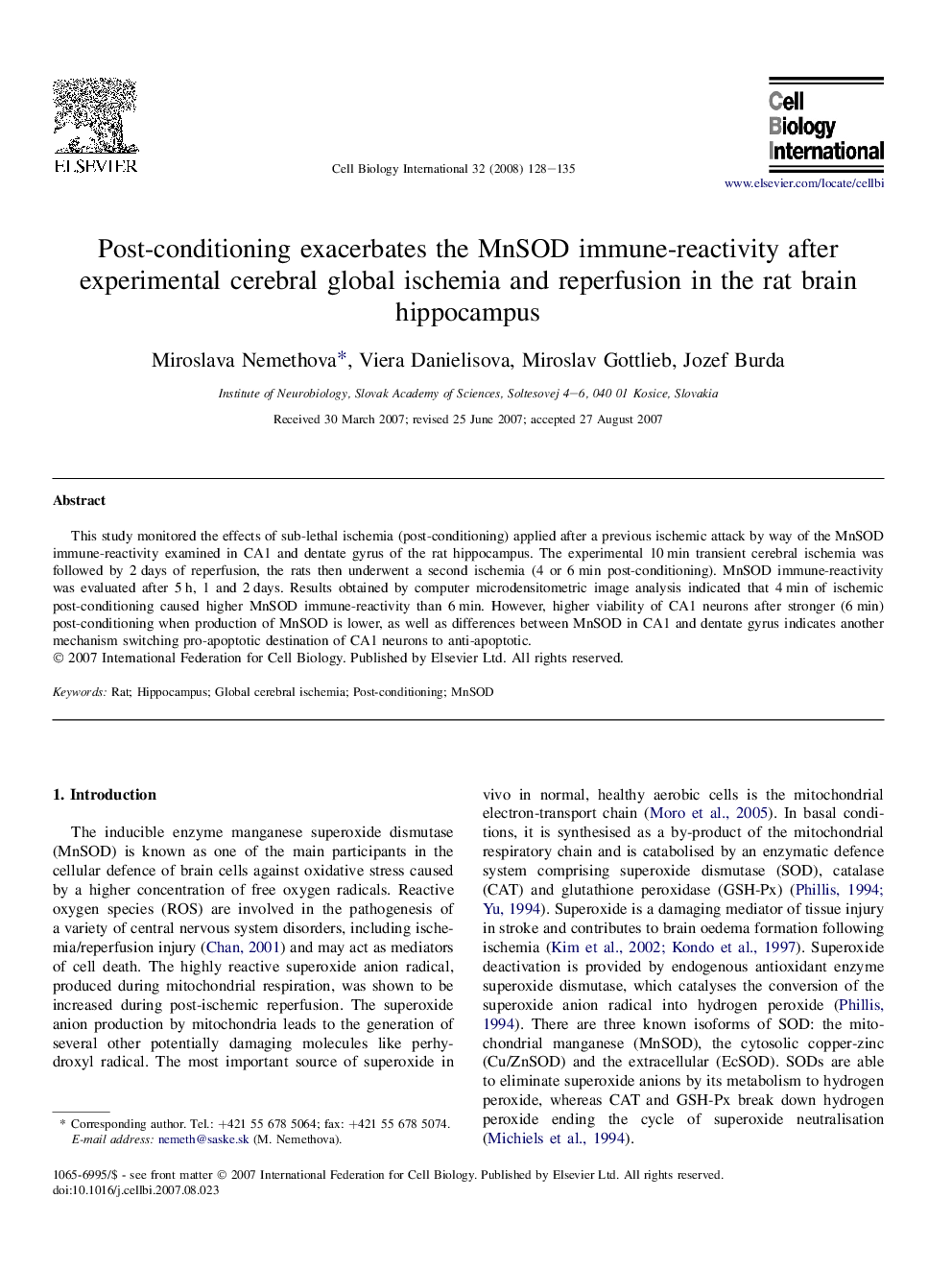| Article ID | Journal | Published Year | Pages | File Type |
|---|---|---|---|---|
| 2067561 | Cell Biology International | 2008 | 8 Pages |
Abstract
This study monitored the effects of sub-lethal ischemia (post-conditioning) applied after a previous ischemic attack by way of the MnSOD immune-reactivity examined in CA1 and dentate gyrus of the rat hippocampus. The experimental 10Â min transient cerebral ischemia was followed by 2Â days of reperfusion, the rats then underwent a second ischemia (4 or 6Â min post-conditioning). MnSOD immune-reactivity was evaluated after 5Â h, 1 and 2Â days. Results obtained by computer microdensitometric image analysis indicated that 4Â min of ischemic post-conditioning caused higher MnSOD immune-reactivity than 6Â min. However, higher viability of CA1 neurons after stronger (6Â min) post-conditioning when production of MnSOD is lower, as well as differences between MnSOD in CA1 and dentate gyrus indicates another mechanism switching pro-apoptotic destination of CA1 neurons to anti-apoptotic.
Related Topics
Life Sciences
Biochemistry, Genetics and Molecular Biology
Biophysics
Authors
Miroslava Nemethova, Viera Danielisova, Miroslav Gottlieb, Jozef Burda,
